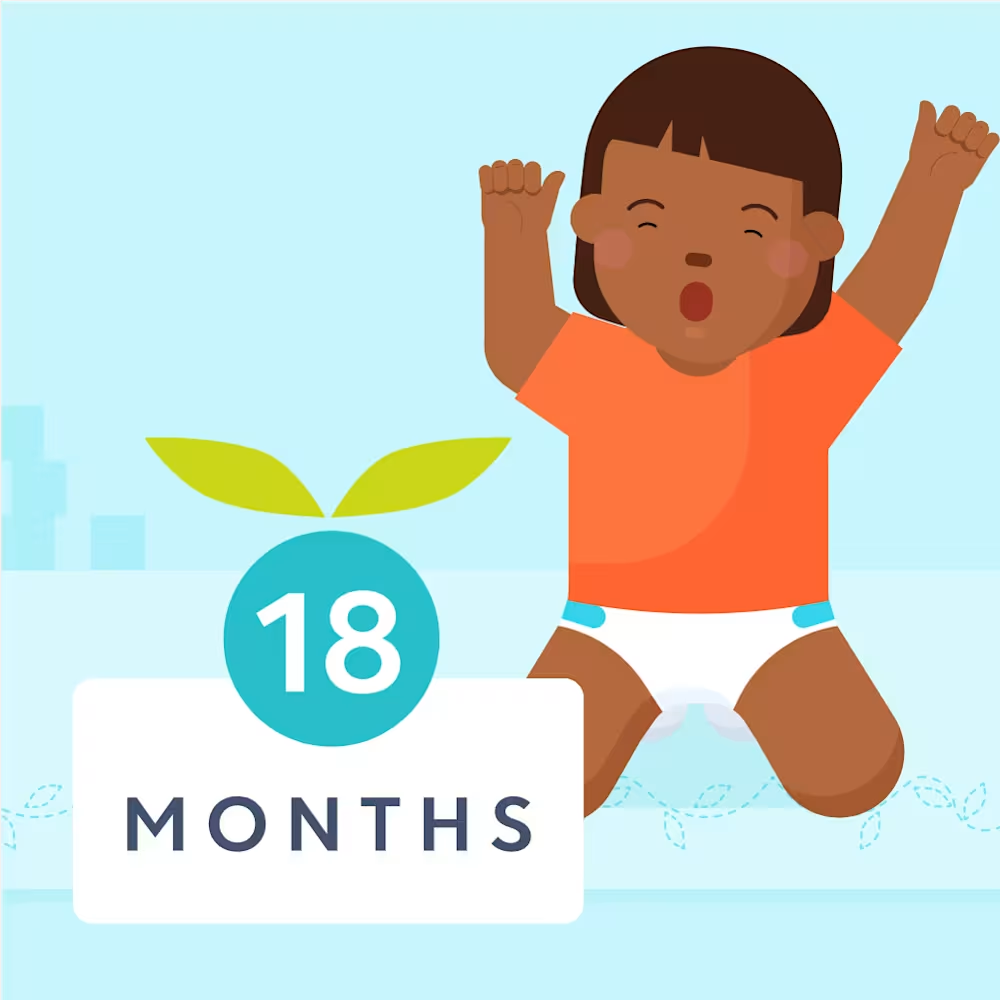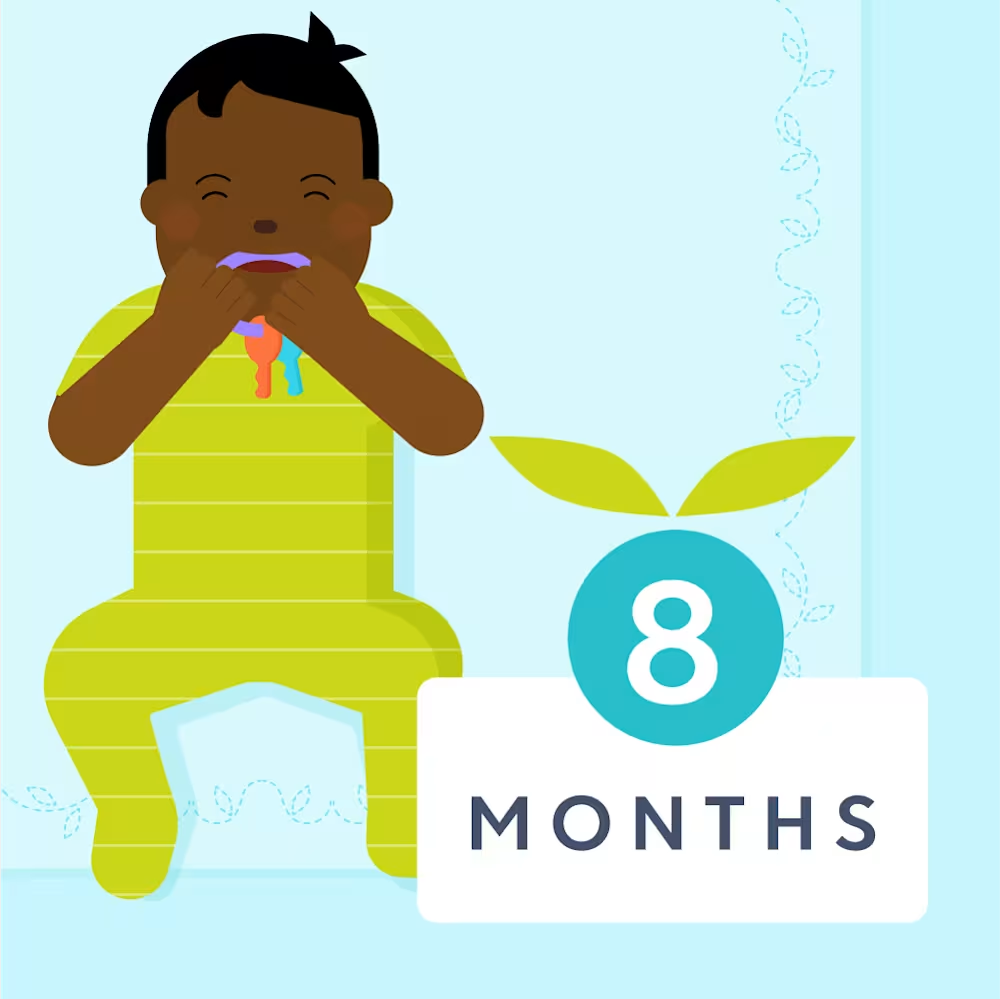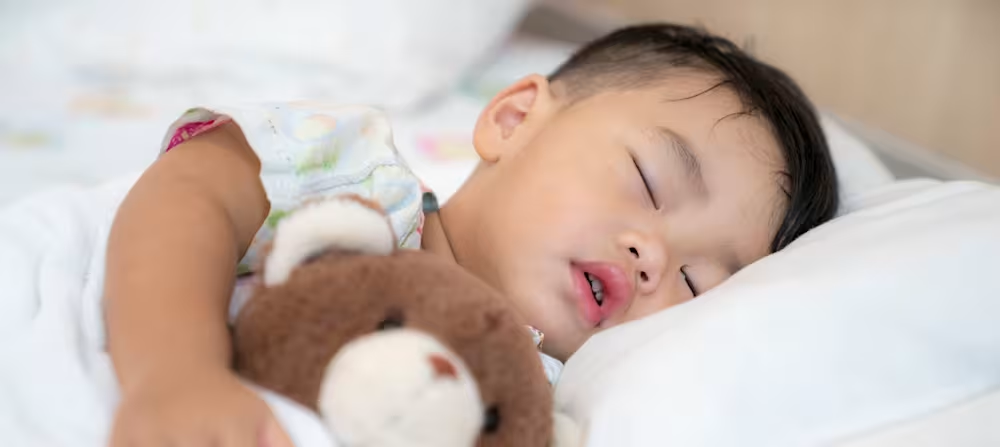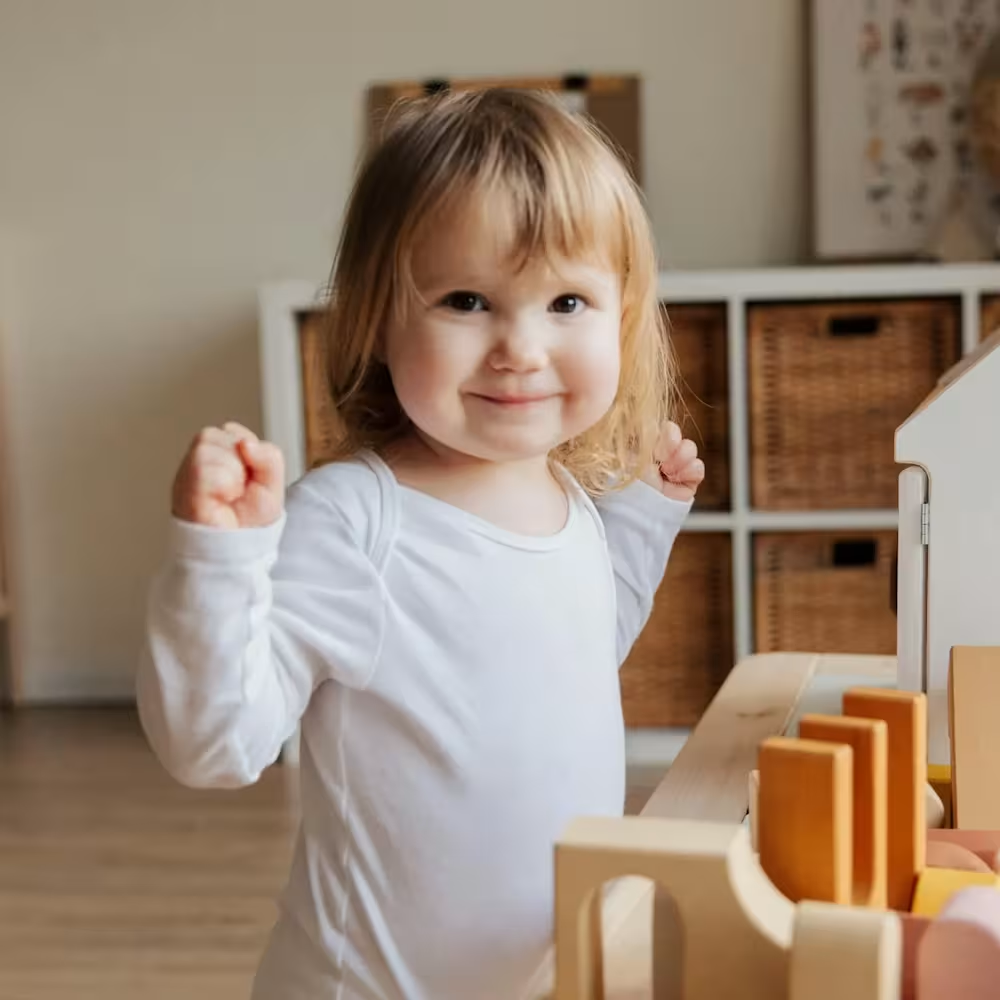Separation anxiety at bedtime: Sleep regression or separation anxiety?
Updated Dec 02, 2025

Is your little one suddenly fearful of new people and crying every time you leave the room, let alone put them down for a nap? These are signs that separation anxiety may be at play.
Separation anxiety is a normal part of development in babies and toddlers that marks a shift in their understanding of themselves in relation to caregivers. It usually begins around the time infants start crawling or walking. After all, this is the first time they can physically distance themselves from their parents. When children realize that they are indeed separate people from their caregivers, it’s a mind-blowing discovery and can provoke anxiety — and may lead to sleep challenges.
In this article, we’ll walk you through common misconceptions about separation anxiety and , give you tips for handling sleep issues when your child is experiencing separation anxiety, and answer frequently asked questions about sleep and separation anxiety.
Table of Contents
Can separation anxiety cause sleep regressions?
can temporarily disrupt your baby’s sleep since their body is on higher alert and they may resist the physical separation that comes during sleep. However, it’s not quite accurate to label it either separation anxiety or a . Instead, separation anxiety can contribute to a sleep regression.
We define a “sleep regression” as a sudden and significant decline in sleep patterns and they’re often characterized by:
trouble falling asleep at night
increased night waking
early morning rises along with nap resistance and/or short or skipped naps during the day.
If your child is experiencing a wave of separation anxiety, they may display these new changes in their sleep habits. These disruptions can be short-lived, around a week or two, if you maintain consistent sleep schedules and bedtime routines, but can also last longer.
When does separation anxiety occur?
Separation anxiety tends to come in waves over the first few years of a child’s life. Infant separation anxiety usually begins around 8 months, when your baby first starts to explore away from you. Around 8 - 14 months [], in addition to sleep challenges, separation anxiety may also include children being weary of new people and places since they associate their parents with familiarity and safety. Separation even at non-sleep times may be challenging.
Symptoms of separation anxiety usually improve after , when children are better able to grasp the concept that their parents will return, even if they’re out of sight — during periods of awake time and sleep.
However, it’s common for toddlers to go through another wave of separation anxiety around. This may look like increased clinginess and children having a harder time separating [] from caregivers at sleep times, even if they were previously falling asleep on their own. While separation anxiety may peak for a couple of weeks, keep in mind any new sleep onset associations that arise from separation anxiety (like rocking to sleep, staying in your child’s room until they’re asleep, etc.) can continue to impact sleep.
Separation anxiety usually ends by the time a toddler is 3 years old []. However, keep in mind every child is unique and will experience separation anxiety differently.
Can sleep regressions and separation anxiety occur simultaneously?
Separation anxiety often leads to new sleep challenges and therefore can contribute to a sleep regression (a sudden worsening of sleep). However, sleep regressions can be caused by plenty of other factors, including teething, illness, travel, or changes to routines, etc.
Why does separation anxiety occur at night?
Separation anxiety often manifests at night because overnight sleep marks a long period of separation from a little one’s caregivers. Children may cry or be extra clingy around bedtime and have an to being placed in their crib. During waves of separation anxiety, it’s not uncommon for children to have trouble settling to sleep and also wake more frequently overnight.
Differentiating toddler sleep problems: Sleep regression or separation anxiety?
It can be frustrating when your little one is sleeping well and you’re doing all the “right” things and then, seemingly out of nowhere, something changes. If your little one is suddenly experiencing sleep challenges like short naps or frequent night wakings when they’d previously been sleeping through the night, this may be a sign of a sleep regression.
Many factors can contribute to a sleep regression, including separation anxiety. To help understand why it’s not so much either a sleep regression OR separation anxiety, we’ve put together a handy chart to help you understand each concept and how they relate to your child’s development.
| Aspect | Sleep regression | Separation anxiety |
|---|---|---|
| Cause | Developmental changes, need for a schedule adjustment, changes in routines | Anxiety over separation from caregivers |
| Onset | Sudden, can be linked to milestones, illness, travel, teething, life changes, separation anxiety, etc. | Gradual, linked to developmental stages and awareness that caregivers are separate people |
| Symptoms | Sudden, significant worsening of sleep including increased night wakes, resisting sleep, early morning rises, skipped or short naps | Crying when separating from caregivers, fear of new people and/or places, more frequent tantrums, sleep challenges |
| Management approach | Maintain consistent bedtime routines and age-appropriate sleep schedules, consider sleep training, stay consistent with independent sleep skills | Introduce transitional object, offer more comfort and reassurance in bedtime routine, set aside one-on-one time with your child |
| Common ages | 3 - 4 months: caused by a biological alteration in the way a child sleeps. Other common ages: 8 - 9 mo, 18 months, 2 years. However, sleep regressions can also occur at any age. | 8 - 10 months, 12 - 18 months, 2 years. Typically fades by around 3 |
How to deal with nighttime separation anxiety?
Tip #1: Maintain sleep routines (with some extra cuddles!)
Responding to your child’s separation anxiety with is very important — and so is helping instill confidence in their ability to be away from you for periods of time. If your little one is experiencing intense emotions or clinginess before bedtime, consider including some extra cuddles and kisses during the day and in their . Keep bedtime as normal as possible, though, as consistency is comforting to children too.
Tip #2: Introduce a comfort object
A comfort object (also called a “transitional object” [] or “lovey”) can help your little one feel safe and secure. Children often pick their own comfort object — like a blanket, soft toy, etc. — between 8 - 12 months [] and seek emotional comfort from it for years to come. Holding onto a lovey can reassure your child that everything is OK and help them become more independent at sleep times. Tucking in the lovey at bedtime can also be included as a step in your child’s sleep routine!
Note the American Academy of Pediatrics (AAP) strongly recommends [] keeping your baby’s sleep space free of loose objects, like blankets and toys, until after their first birthday. For babies under 12 months, some parents find it helpful to use the transitional object as part of their bedtime routine, but wait to include it in their sleep space.
Tip #3: Aim to be comforting and consistent during overnight wakes
If your child is going through a wave of separation anxiety, they may be waking more frequently overnight. We suggest handling overnight wakes with a loving and consistent approach. When they call out overnight, consider offering comfort and reassurance through patting and soothing [].
If you’ve previously sleep trained and your child is able to fall asleep independently, be aware that new may have a lasting impact on your child’s ability to fall asleep independently. If you start getting them out of bed during overnight wakes and help them back to sleep during a period of separation anxiety, they may expect this going forward when they call out overnight. This can contribute to disrupted sleep at night. These new sleep habits may be tricky to change, even when the period of separation anxiety has subsided.
Tip #4: Designate one-on-one time with your child each day
Sometimes a little extra connection during the day can go a long way in helping your toddler prepare to separate for sleep, especially if they are showing signs of separation anxiety. Consider setting aside where your little one has your undivided attention, even if it’s for 10 - 15 minutes.
When to talk to a doctor
According to the AAP [], it’s rare for separation anxiety to persist on a daily basis once your child is out of the preschool years. If your older child continues to have separation anxiety, we recommend bringing this up with their doctor as it could be a sign of separation anxiety disorder []. Kids with this disorder are often convinced something bad will happen if they’re separated from their caregivers. However, if you’re concerned about your child’s separation anxiety, emotional development, stress level, or sleep at any age, reach out to their pediatrician.
Takeaway
Separation anxiety is a normal part of child development. It usually begins around the time your child starts to crawl/walk, as this physical separation helps them realize that they are a separate person from you, their primary caregiver. This epiphany can be anxiety-inducing for little ones!
Children often experience waves of separation anxiety over their first few years of life. It typically subsides around 3, but every child is unique and will experience separation anxiety at different times with varying degrees of intensity.
Separation anxiety can impact sleep. This may look like trouble settling for sleep, increased night wakings, early morning rises, and skipped or short naps. Separation anxiety can be a contributing factor in a sleep regression (a new, sudden worsening of sleep).
Waves of separation anxiety tend to last a week or two. However, sleep can be impacted for longer if children establish new sleep onset associations (like being rocked to sleep) during a period of separation anxiety.
Sleep regression or separation anxiety FAQ
Share article:
Note: The content on this site is for informational purposes only and should not replace medical advice from your doctor, pediatrician, or medical professional. If you have questions or concerns, you should contact a medical professional.
7 Sources
Table of Contents
Share article:






